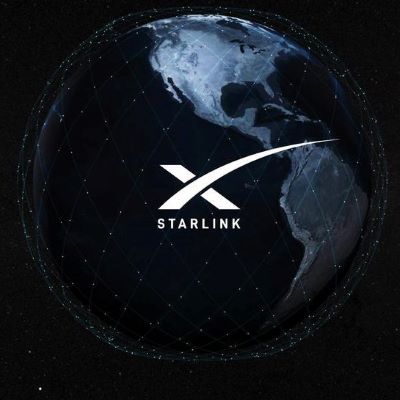News
The 10-year licence from Arcep is the green light SpaceX has been waiting for, but one villages misgivings could see an early ground station stalled
On Friday, France’s telecoms regulator, Arcep, announced that it had granted SpaceX’s Starlink satellite broadband project a 10-year licence to provide internet in France. The licence will cover the 10.95–12.70 GHz and 14–14.5 GHz bands.
SpaceX has currently launched around 1,145 low-Earth-orbit (LEO) satellites as part of its Starlink constellation, with plans to expand this figure significantly throughout the year and beyond, ultimately reaching around 12,000 devices by the mid-2020s. These LEO satellites are about 60-times closer to Earth than traditional satellites, helping them to overcome traditional issues associated with satellite connectivity, such as high latency.
The company had been accepting pre-orders for its service earlier this month. In order to access the internet, customers will be required purchase a Starlink Kit that includes a phased-array dish antenna and Wi-Fi router device to connect wirelessly to the satellite internet. Once connected, customers will reportedly have access to speeds of 50–150 Mbps, with latency between 20ms and 40ms.
In its current form, SpaceX warns that some new customers could experience brief periods of no service, but this should improve as deployment broadens.
“As we launch more satellites, install more ground stations and improve our networking software, data speed, latency and uptime will improve dramatically,” said the company.
Prior to attaining this licence, SpaceX had only received authorisation to set up three ground stations in France, in Villenave-d’Ornon, Gravelines and Saint-Senier-de-Beuvron.
However, initial plans to deploy the ground stations in Saint-Senier-de-Beuvron may in fact prove more problematic than sending the satellites themselves into orbit. The village, which has a population of around 350, issued a decree to block the construction of nine ‘radomes’, three-metre-tall globes that protect the antennas on the ground. The primary reason given was the perceived health risk.
"This project is totally new. We don’t have any idea of the impact of these signals," said village mayor Noemie Brault. "As a precaution the municipal council said no."
The council argued that the decision was not a result of technophobia but rather due to a perceived lack of research on the biological impact of the electromagnetic radiation. For example, another local farmer, Jean-Marc Belloir, noted that he uses connectivity for a huge variety of tasks on his farm, but, nonetheless, he still has reservations about the impact of the satellite connectivity itself on the health of humans an animals.
"On our farm, we’re always online. My cows are linked up; my smart watch warns me when they’re going to calve," he said. “But when you see the range of these antennas, there has to be some research.”
Mayor Brault herself, however, did note that she was somewhat sceptical about the cost effectiveness of the project, as well as some of Elon Musk’s additional projects.
"When you hear that he wants to implant a chip in people’s brains, it’s frightening," she said, referring to Musk’s Neuralink project.
Despite the villages reservations, construction company Sipartech says it will refile its deployment request and the village will be unlikely to block it going ahead given current objections.
Starlink’s satellite broadband is already being trialled in the US and the UK, as well as being available in some parts of Spain ahead of its official Spanish launch. A launch in Poland is also planned, with SpaceX taking orders for the service since two weeks ago.
Also in the news:
Zero-touch 5G networks: A network automation imperative
Huawei turns to AI pig farming to bring home the bacon
Ocean Networks, Inc. announces its Caribbean Express Cable


















